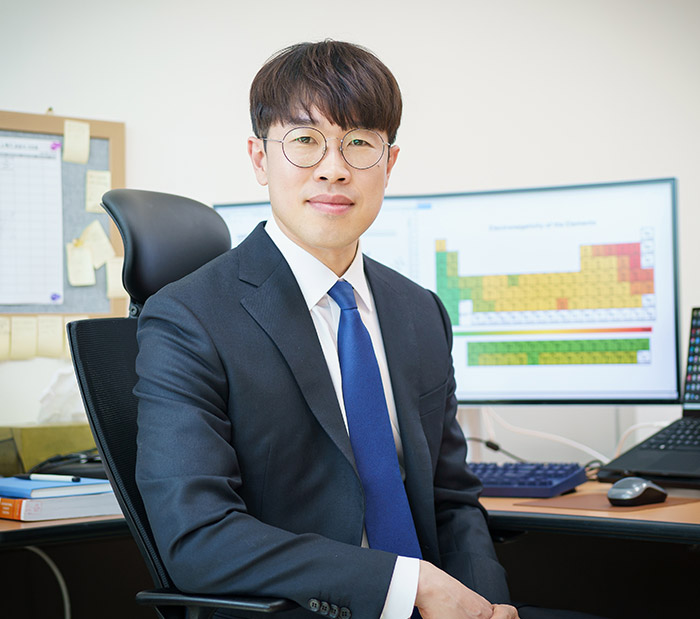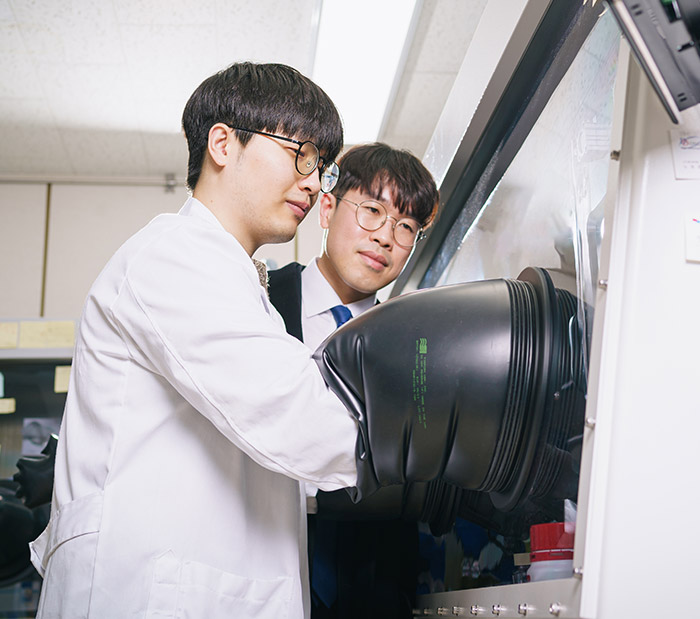Research Stories
Stability-limiting heterointerfaces of perovskite photovoltaics
Unraveling stability aggravation by a ubiquitously utilized surface passivation layer
SKKU Advanced Institute of Nano Technology
Prof.
LEE, JIN WOOK
Keonwoo Park
Prof.Jin-Wook Lee`s research team in the SKKU Advanced Nano Technology (SAINT) and Department of Nano Engineering have successfully developed core technologies to significantly improve the stability of perovskite solar cells (PSCs). The research paper was published in the world-renowned scientific journal Nature on March 15, 2022.
The PSCs are considered a promising candidate for next-generation photovoltaictechnology due to their high-efficiency and low manufacturing cost. Recently,many researchers in both academia and industry are working on resolving remaining issues for commercialization of the PSCs such as poor long-termoperational stability.
For fabrication of high-performance PSCs, reducing crystal defect density in bulk and surface of the perovskite film is essential. A surface passivation strategy by alkylammonium halides has been widely used to enhance the power conversion efficiency of PSCs. However, incorporation of the insulating passivation layer between perovskite and charge transporting layer can cause charge accumulation at the interface and degrade the PSCs' operational stability.
The previous studies have only focused on the efficiency improvement by the surface passivation layer, but they did not notice the possible side effects of thesurface passivation layers.
Prof.Lee`s team unraveled that the widely used surface passivation layer distorts energy band structure at the heterointerface of the PSCs to impede photo-generated charge collection, and consequently aggravate the stability ofperovskite solar cells.
They developed a new surface passivation agent without the side effects to maximize the PSC’s power conversion efficiency and operational stability. As a result, the PSCs fabricated in their study demonstrated the world's best efficiency and stability.
Prof.Lee`s research provides advanced understanding of energy band structure at the heterointerfaces based on halide perovskite, expected to resolve the stability issue of the PSCs to accelerate the commercialization of the PSCs.
Meanwhile,Prof. Jin-Wook Lee recently published another review paper on ‘A’ site cationin halide perovskites in Science. He was selected as Highly Cited Researchers 2021 (HCR 2021) by Clarivate Analytics in the field of cross-field.
※ Related research papers and website
1) Stability-limiting heterointerfaces of perovskite photovoltaics, Nature, 2022, doi.org/10.1038/s41586-022-04604-5. (
corresponding author: Prof. Jin-Wook Lee, co-author: Keonwoo Park
2) Rethinking the A cation in halide perovskites, Science, 2022, 375,835. (First author: Prof. Jin-Wook Lee)
3) Prof. Jin-Wook Lee`s Lab website: https://jwlee870217.wixsite.com/mysite
Figure 1. charge displacement onperovskite film surface by surface defect healing ions
Figure 2. Operational stability ofperovskite solar cells with different surface passivation strategies


